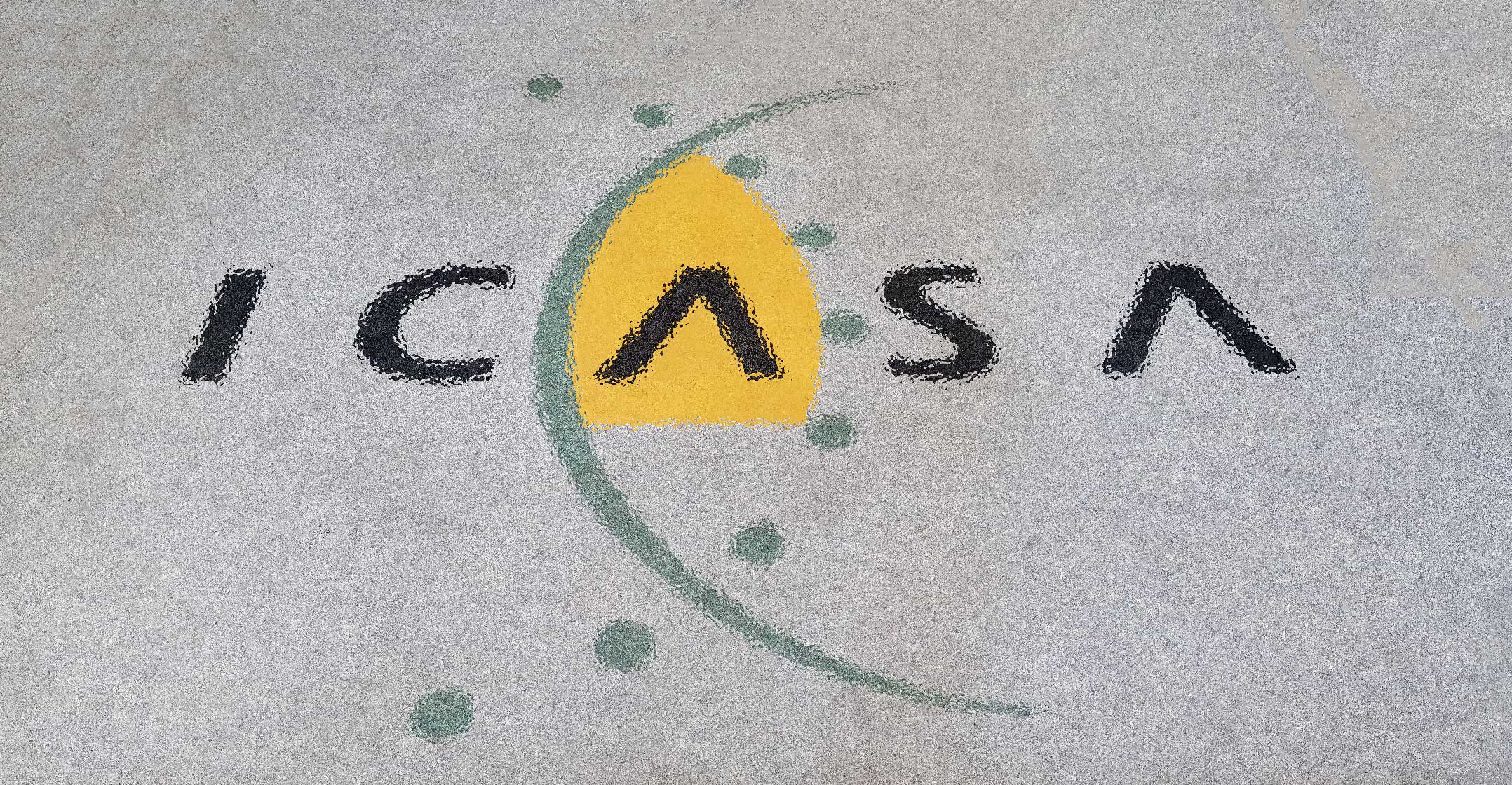 Communications regulator Icasa has published an Information Memorandum setting out five options for licensing so-called high-demand spectrum in South Africa, which will allow mobile operators to roll out both 4G and 5G infrastructure.
Communications regulator Icasa has published an Information Memorandum setting out five options for licensing so-called high-demand spectrum in South Africa, which will allow mobile operators to roll out both 4G and 5G infrastructure.
TechCentral first reported on Thursday that the regulator plans to license spectrum suitable for both 4G/LTE and next-generation 5G networks, a move that appears to go against a desire by government to license 5G as part of a separate process but one which is likely to be warmly welcomed by the telecommunications sector.
The licensing of the 3.5GHz band in particular is set to be welcomed — it has been earmarked worldwide as one of the key spectrum bands for 5G, with local operators keen to get access to spectrum that will allow them to begin offering 5G services as soon as next year.
Icasa plans to license the 700MHz and 800MHz bands (the “digital dividend” still occupied by analogue television broadcasters), along with spectrum at 2.3GHz, 2.6GHz and 3.5GHz. The plan will see the total spectrum made available to mobile operators increased from the current 566MHz to 958MHz.
The authority said it resolved to include 2.3GHz and 3.5GHz bands for licensing over and above the bands stipulated in government’s policy on high-demand spectrum and its policy direction on licensing of a wholesale open-access network (Woan) because 3.5GHz was identified for mobile cellular services at the World Radiocommunication Conference in 2004 and 2.3GHz in the International Telecommunication Union’s radio regulation in 2012.
Separate process
Whether the decision will be met with resistance from government is not yet clear, though communications minister Stella Ndabeni-Abrahams said in July that she wanted to push out the licensing of 5G-suitable spectrum as a separate process. However, late on Friday, the minister said in a statement that she “commends Icasa for its undertaking to expedite the spectrum licensing process”.
“The combined availability of spectrum within the low, mid and high ranges, with the appropriate amount of contiguous spectrum per network, as well as regulatory conditions, will facilitate the success of IMT (mobile telecoms), including all use cases,” Icasa said in motivation of its decision.
Specifically, Icasa plans to license:
- 60MHz (2x30MHz) in the 700MHz band
- 60MHz (2x30MHz) in the 800MHz band
- 40MHz in the 2.3GHz band
- 170MHz in the 2.6GHz band
- 116MHz in the 3.5GHz band
The spectrum will be awarded on a national basis, with applicants eligible to bid for any of the lots that will be on offer. The reserve price for each lot will be different, to be determined by Icasa after consultation with the industry. Each lot is likely to fetch a reserve price in the billions of rand.
Radio frequency spectrum caps will be introduced for the licensing process, again to be determined the regulator following industry consultation.
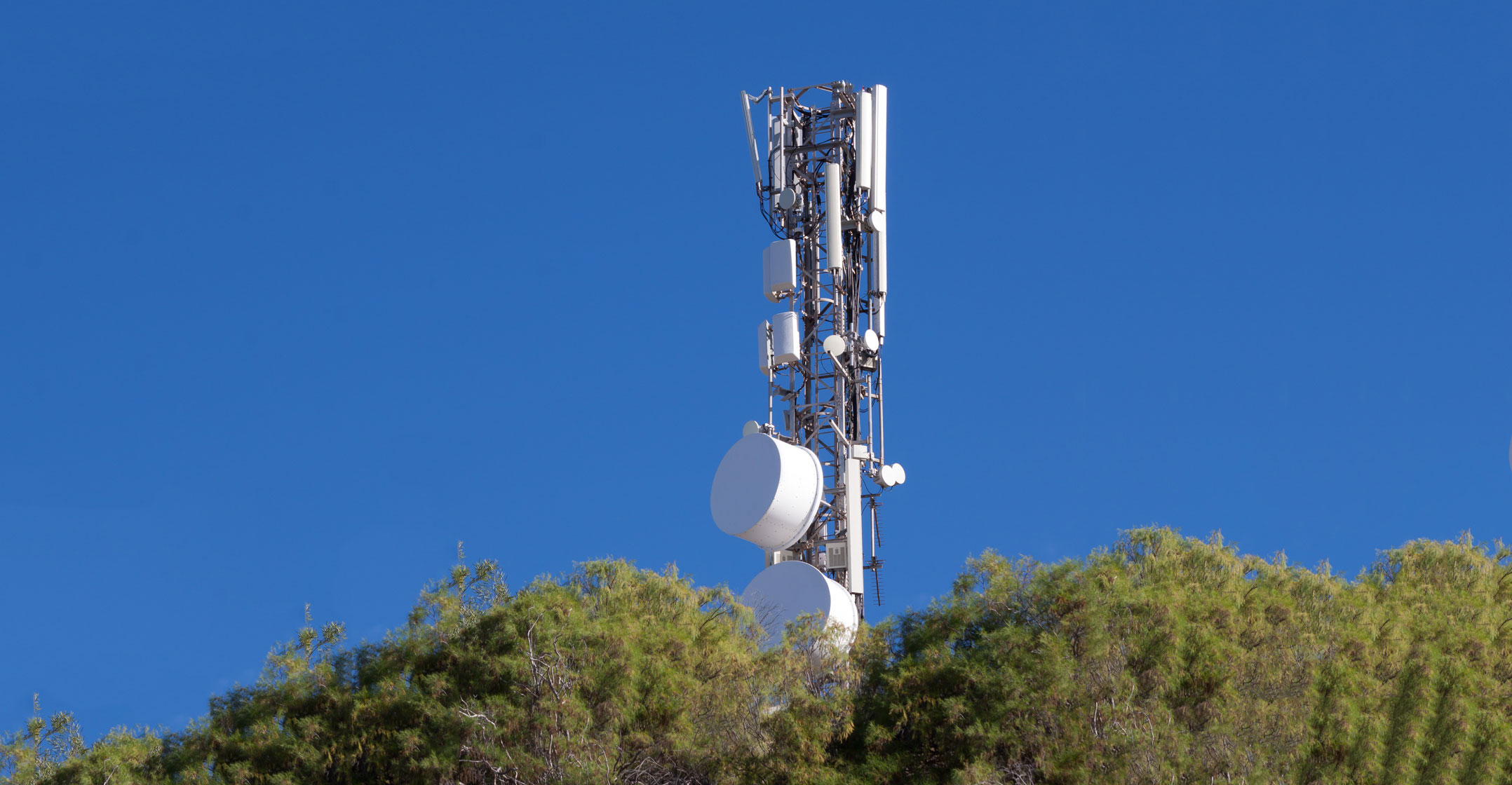 Icasa’s five options for the 700MHz, 800MHz and 2.6GHz bands, which it has asked industry to comment on, are:
Icasa’s five options for the 700MHz, 800MHz and 2.6GHz bands, which it has asked industry to comment on, are:
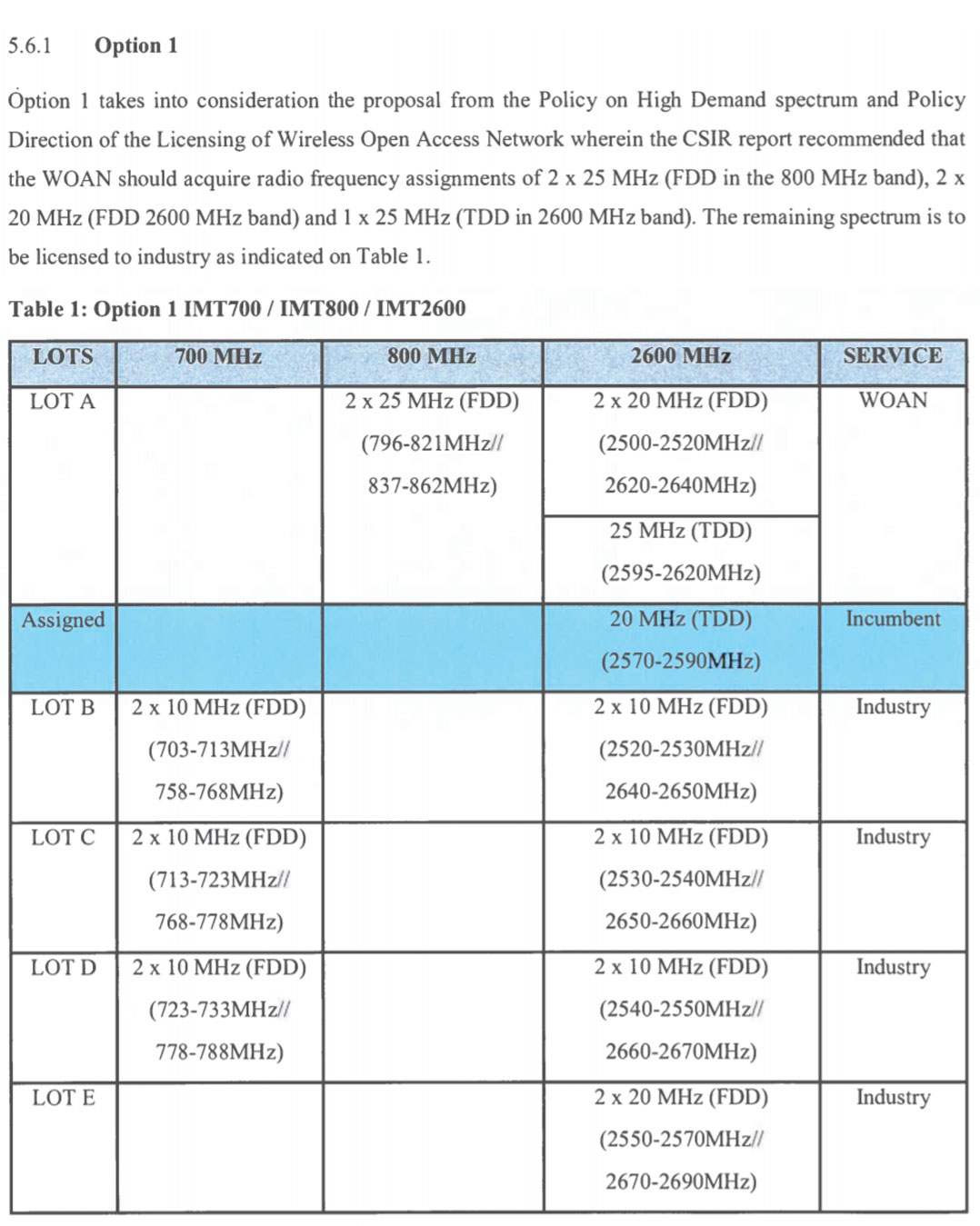
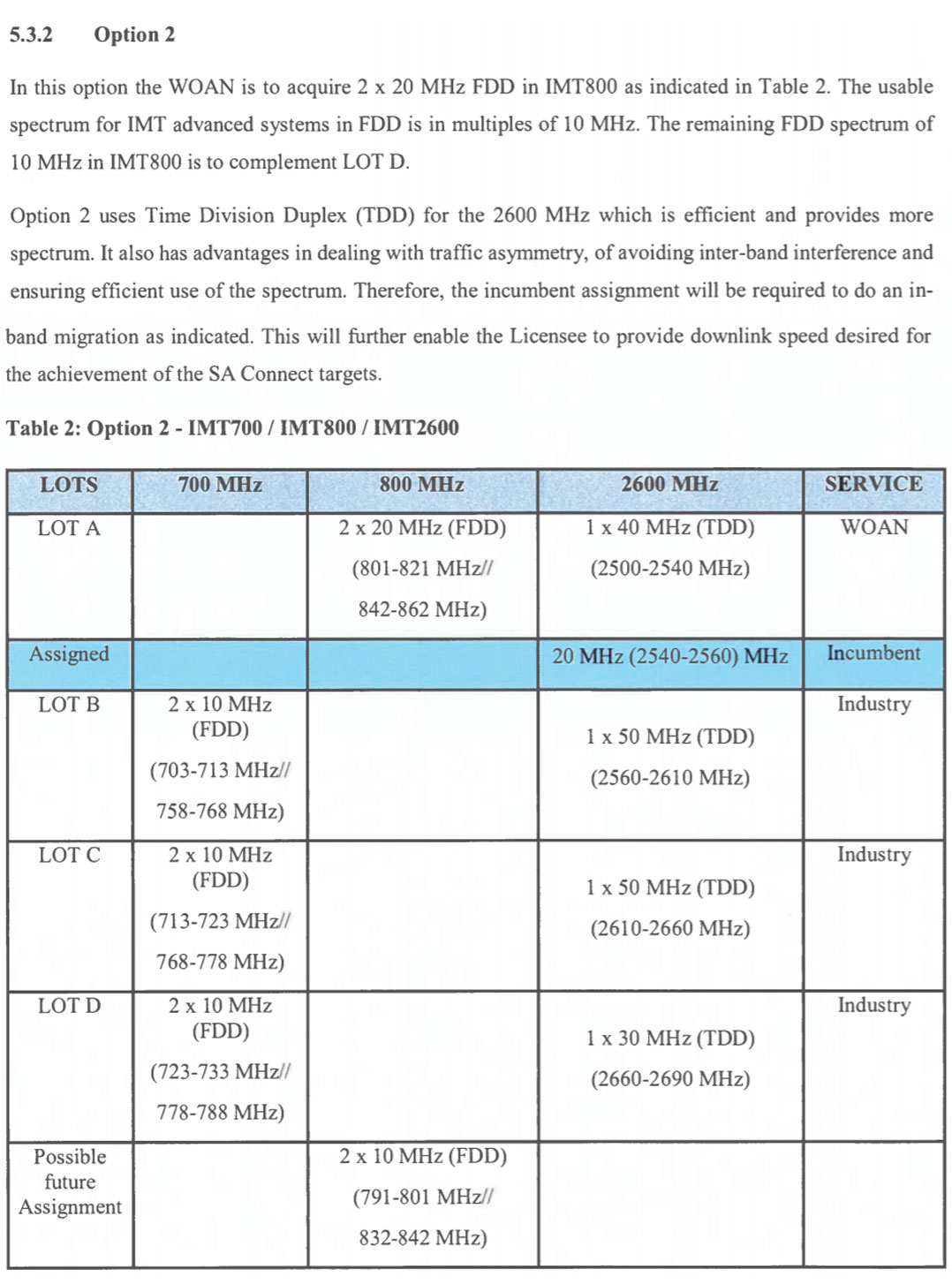
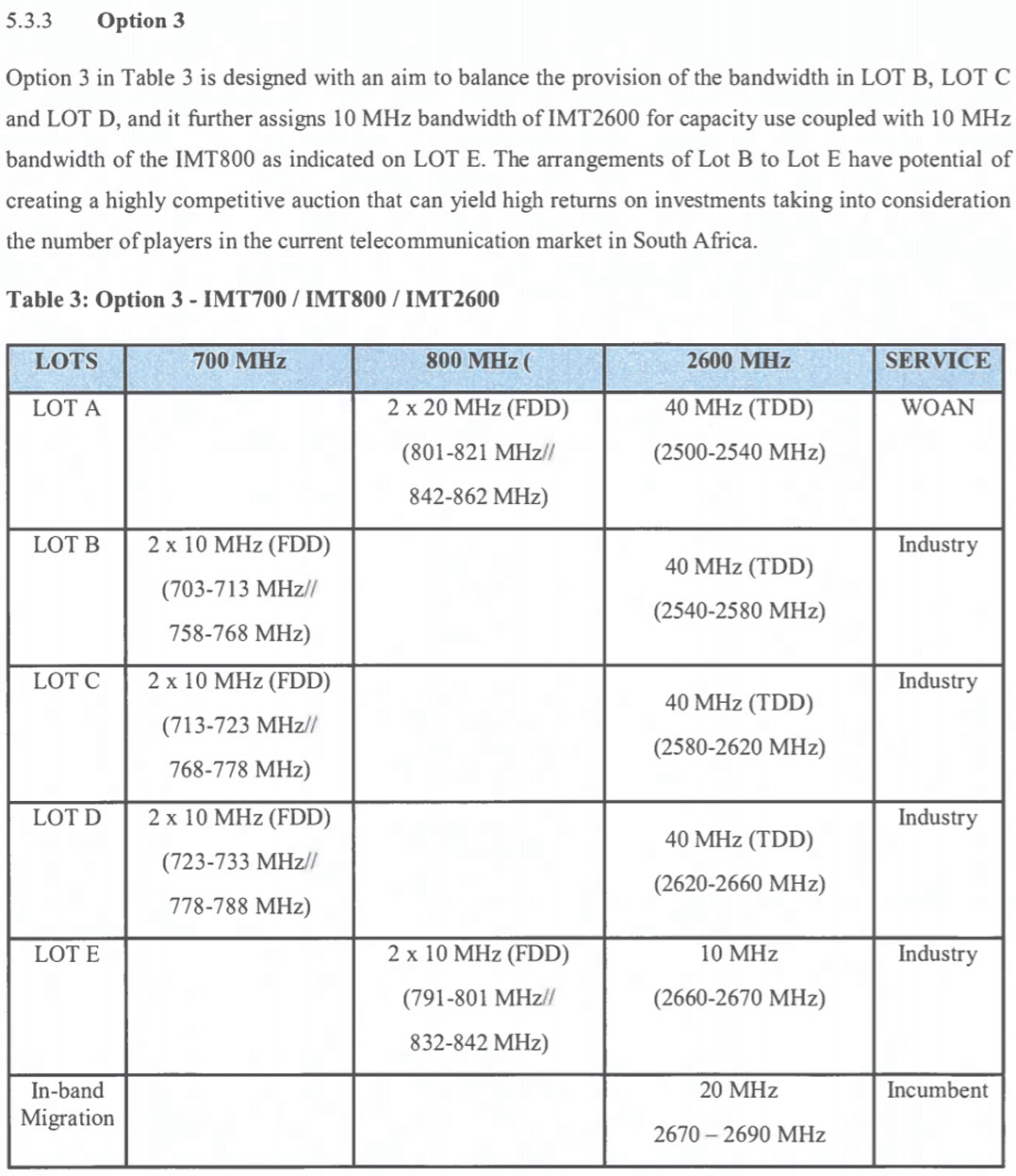

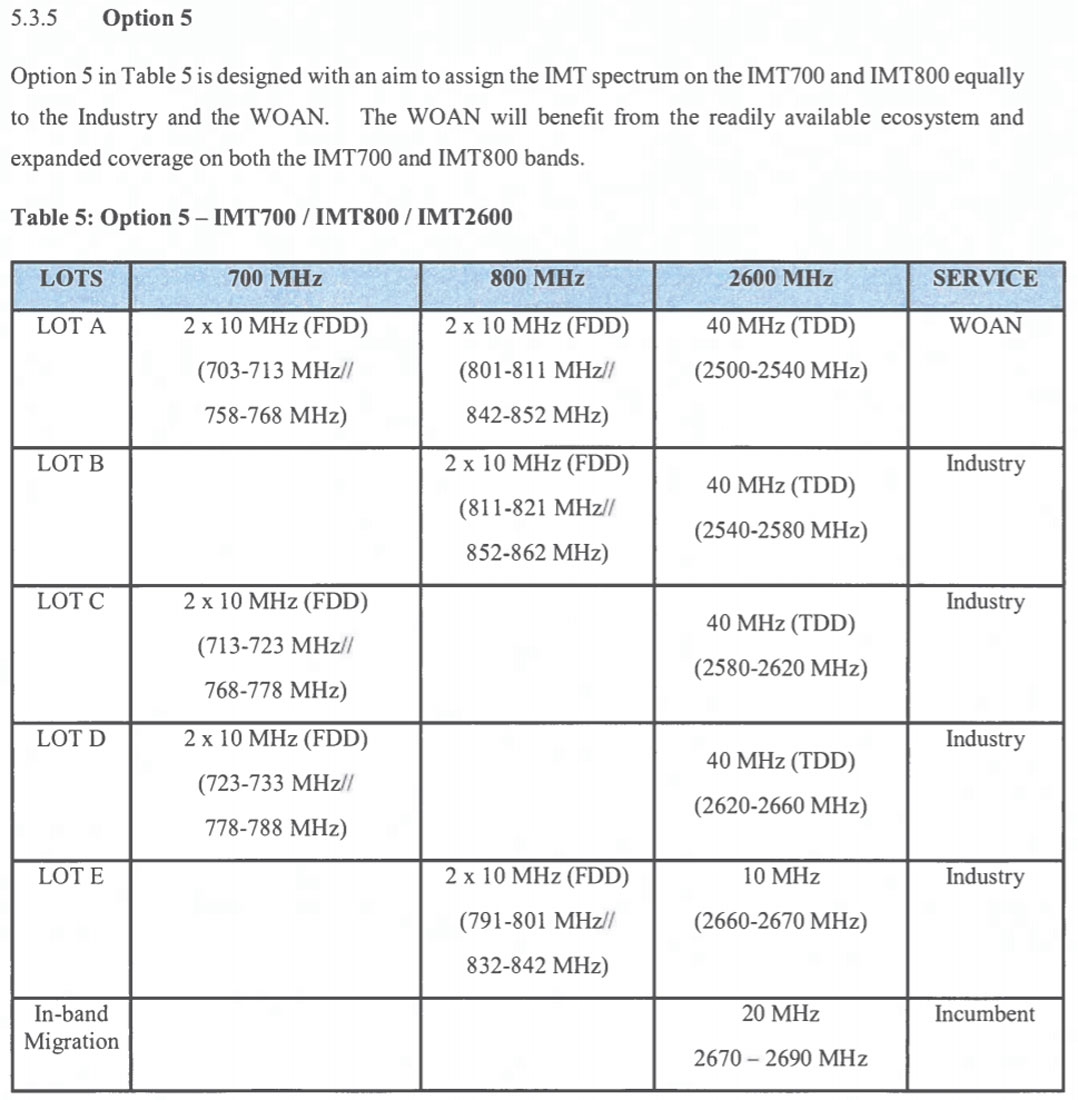
Icasa has also placed obligations on successful licensees. Among other things, those who receive spectrum must:
- Provide data services across the country with an average upload of 15Mbit/s and average download of 30Mbit/s across by the country by 2025.
- Achieve coverage targets, including in rural areas, still to be determined (certain spectrum lots only).
- Provide open access to a minimum of three mobile virtual network operators. These MVNOs must have a minimum of 51% ownership from historically disadvantaged groups.
- Buy a minimum 30% of national capacity from the Woan for a period of at least five years.
Icasa is considering various auction formats to sell the spectrum. Among these is the simultaneous multi-round auction, or SMRA, with generic spectrum lots. It appears to be the format that the regulator is likely to use. Specifically:
- The SMRA is an open, ascending, multi-unit auction that takes place over a number of rounds. Bids are placed for individual lots and the auction proceeds in successive rounds with increasing prices until there are no new bids. A point-based activity rule is often used, under which bidders may only decrease or maintain their level of demand from one round to the other, as measure by the number of eligibility points. In each round, the highest bid placed on each lot is called a standing high bid. When the auction ends, standing high bids become winning bids and the bidders pay the amounts they bid.
- The SMRA with generic lots has been used in several recent multi-band spectrum awards in Europe.
- The reserve price of each lot will be published in the invitation to apply.
- The auction will take place at a venue determined by Icasa with all bidders co-located in the same building. — (c) 2019 NewsCentral Media

